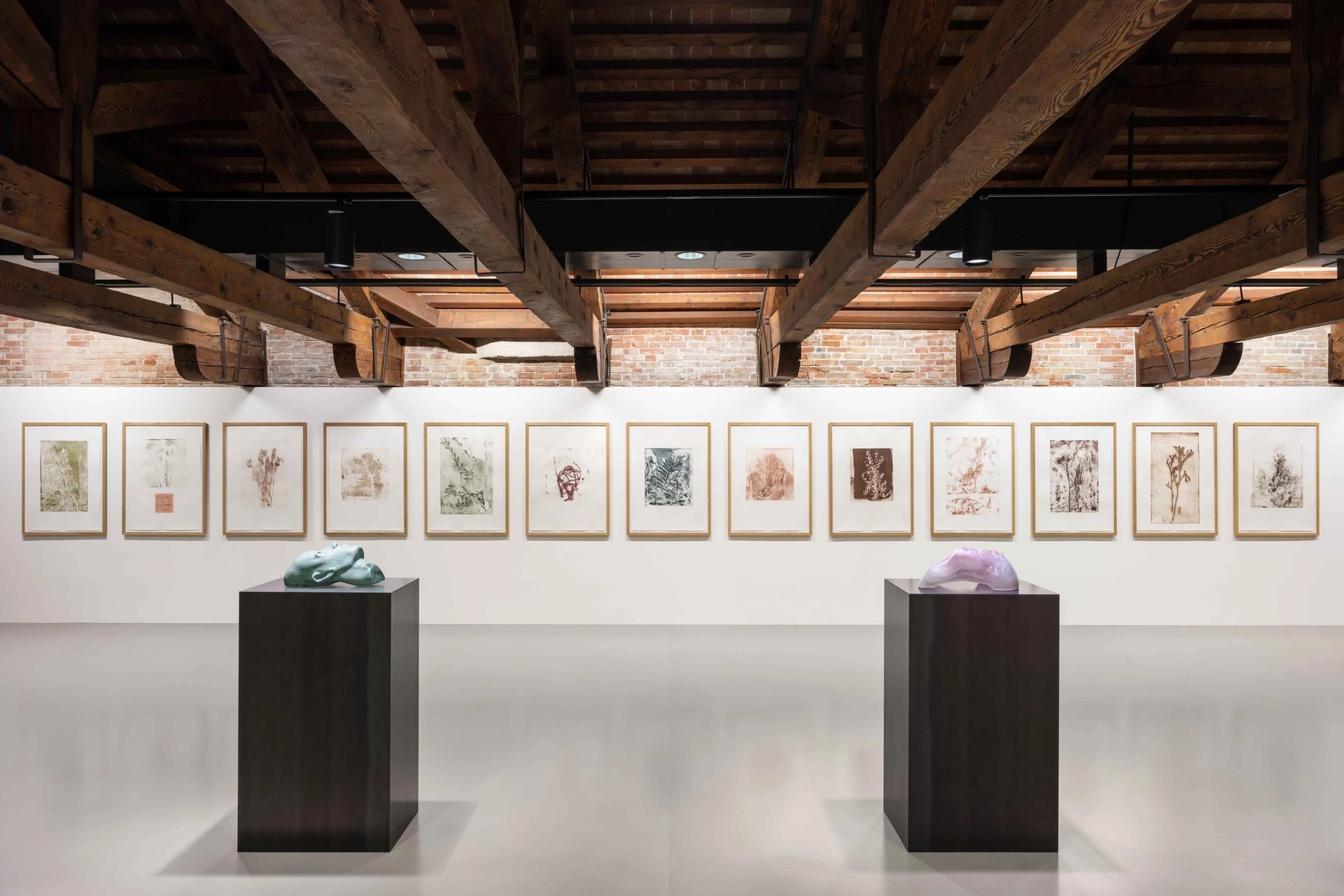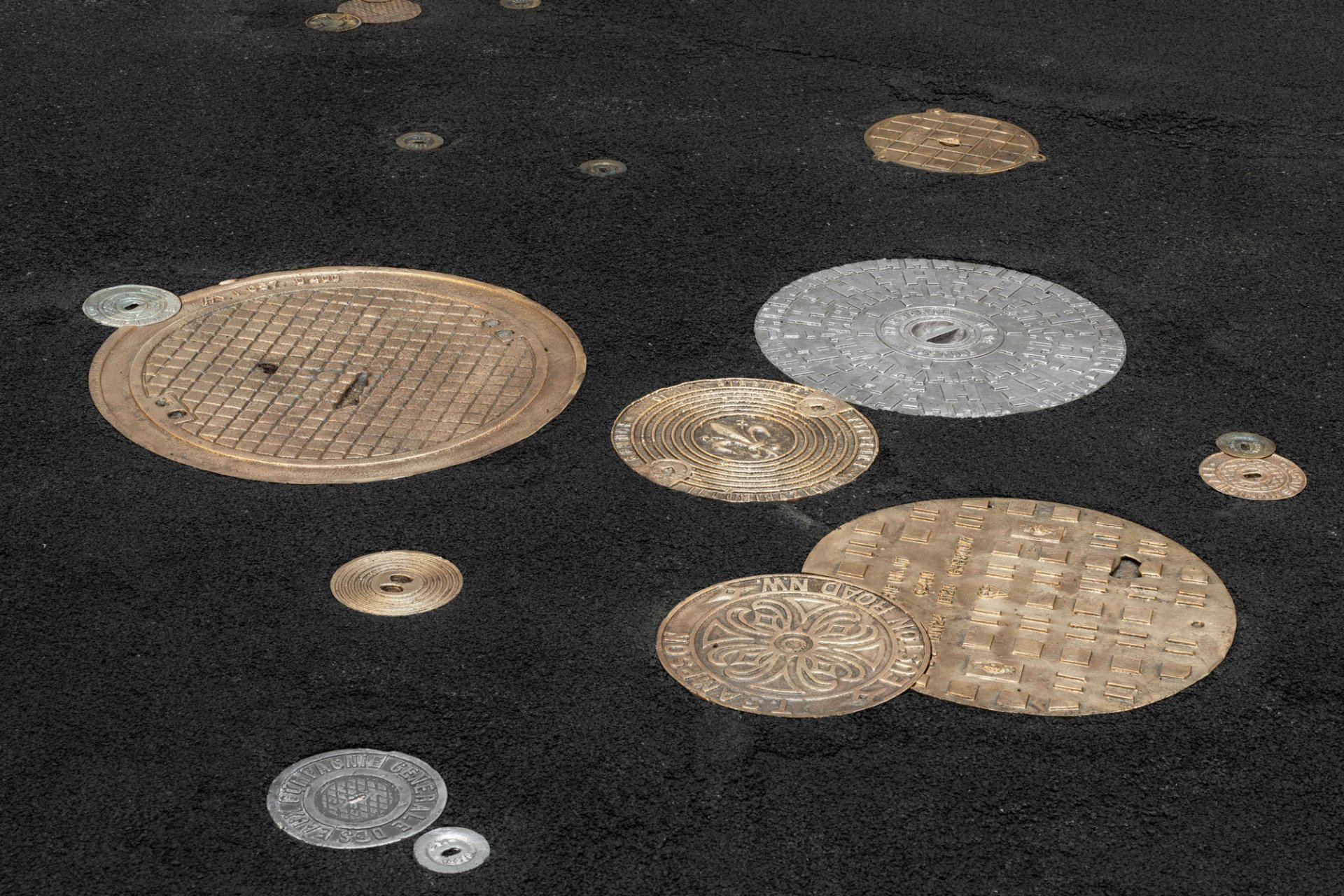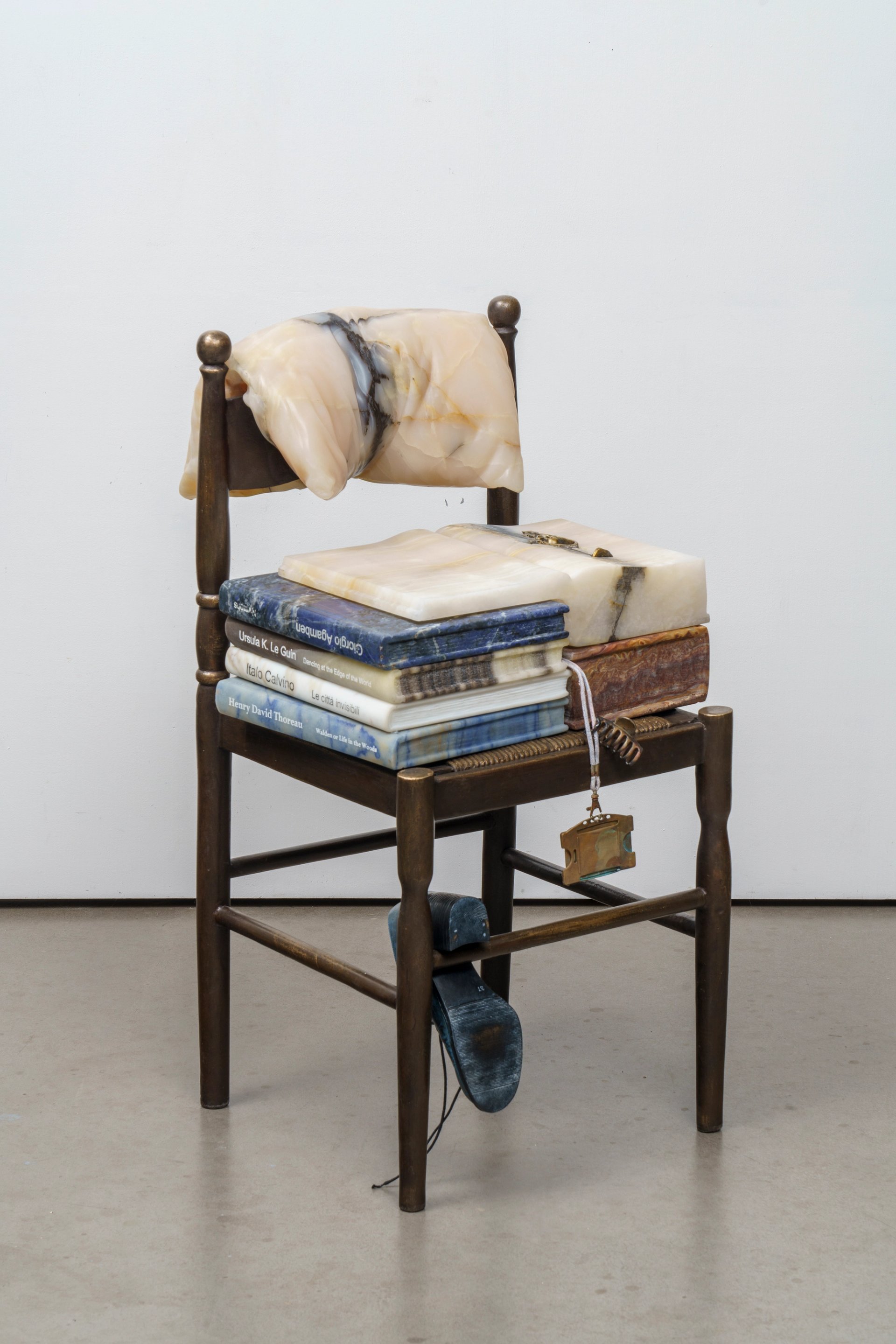The French luxurious items magnate François Pinault nonetheless makes waves within the artwork world with the exhibitions he oversees at his venues in Venice and his Paris house Bourse de Commerce. Two main reveals opened at his Venetian areas this weekend—at Punta della Dogana, the Pinault Assortment presents the primary main exhibition in Italy of the established German artist Thomas Schütte (Genealogies, till 23 November), whereas throughout the Grand Canal at Palazzo Grassi, an enormous present devoted to the Franco-Italian artist Tatiana Trouvé (The Unusual Lifetime of Issues, till 4 January 2026) has opened. Now we have chosen some key works from each reveals.
Thomas Schütte
“The [Schütte] exhibition highlights the unifying threads that hyperlink collectively the completely different moments in his oeuvre—the connection he works out between drawing and sculpture, his enduring fascination for the human determine, his work’s deep rootedness in historical past, in artwork historical past, in addition to his personal,” writes François Pinault within the exhibition catalogue.
The exhibition, its co-curator Jean-Marie Gallais tells The Artwork Newspaper, goes past the Pinault Assortment’s current holding of Shütte’s sculptures to supply “one thing additional”. It’s, he continues, “two reveals in a approach, blended into one, that includes each sculptures and two-dimensional works.”
Mutter Erde (2024)
© Thomas Schütte, by SIAE 2025. Photograph: Matteo De Fina © Palazzo Grassi – Pinault Assortment
Exterior the exhibition’s entrance, guests will see an imposing standing feminine determine in bronze titled Mutter Erde (2024). “Often the ladies are mendacity down in his works. That is the primary time he has made a standing feminine determine,” says Gallais, who writes within the catalogue that the start line for the work was a small figurine discovered within the conventional Dreikönigskuchen (a logo of the feast day of the Epiphany).
A corresponding male determine titled Vater Staat (2010)—depicting a wizened man seemingly with out arms, bedecked in a gown tied on the waist—can also be included within the present, encased in a jail. “This work was proven exterior Punta della Dogana greater than ten years in the past, Gallais says. “The pairing says lots about duality—good and unhealthy.”
The curator stresses that the attraction of those two archetypal quasi-hieratic sculptures lies within the distinction between their strong frontal side and the “astonishing lightness” that emerges as you stroll round them.
Drawings/watercolours (2022)

Set up view of Thomas Schütte. Genealogies that includes his works Glass: You No. 24 (2018), Glass: Me No. 33 (2018) and Fleurs pour M. Duchamp (2002) © Thomas Schütte, by SIAE 2025. Photograph: Marco Cappelletti © Palazzo Grassi – Pinault Assortment
A choice of watercolours on present in one of many galleries had been made whereas Schütte was in hospital for 3 months in 2022. “The works present him getting inside his thoughts and his inside demons—his combat collect the feelings to get again to the surface world,” Gallais says. “He was hospitalised… and will do nothing however produce these works on paper at an intense, unimaginable price,” writes Camille Morineau, the present’s co-curator. The watercolours range in topic and tone, from flowers and cute animals to nightmarish figures and kinds.
Within the centre of the room, there are sculptures re-interpreting the normal reclining girl motif, made between 1997 and 2006 (together with Frau III, 2014), that are juxtaposed with the watercolours. “With these sculptures, Schütte has made an art-historical subject his personal: the reclining nude girl,” writes Morineau.
“This was a comparatively well-known path and I wished to take it one step additional,” stated Schütte in 2004.
Tatiana Trouvé
“By providing [Trouvé] free reign to occupy all of the areas within the palazzo in whichever approach she chooses, François Pinault is giving one of the vital represented artists in his assortment the prospect to show all of the sides of her creative world,” writes Bruno Racine, the chief government officer of the Pinault Assortment, within the exhibition catalogue.
James Lingwood, the exhibition co-curator, says that Trouvé’s profession has simmered over time. “Perhaps it’s as a result of she is such a singular voice—there may be such a herd mentality within the artwork world and he or she has gone her personal approach, in her personal time. Hopefully the present on the Palazzo Grassi [makes clear] the huge imaginary territory of her work,” he tells The Artwork Newspaper.
Hors-sol (2025)

Set up view of Tatiana Trouvé, Hors-sol (2025) at Tatiana Trouvé. The Unusual Lifetime of Issues at Palazzo Grassi
Photograph: © Marco Cappelletti
On her studio wall, Trouvé has pinned a quote from the cultural theorist Astrida Neimanis: “The water that’s in your physique now was maybe a river earlier than, maybe it was a part of an ocean earlier than.” Trouvé says that “all the exhibition is linked to this dynamic, this regeneration, to displacements and transformations so what seems in a single place can reappear otherwise elsewhere, in a cycle that’s like life”.
The work within the atrium of Palazzo Grassi, Hors-sol, is linked to the phenomenon of the circulation of water; guests stroll over an asphalt flooring embedded with drain covers in stone and metallic in addition to different parts from the road resembling zebra crossings and metallic covers, explains Trouvé. Considered from above, the work is a mind-boggling patchwork of metallic and asphalt, resembling a cosmos or a surreal map of Venice’s waterways.
“Trouvé’s Hors-sol, her map of the asphalt empire, is each completely correct and largely ineffective,” writes the critic Neville Wakefield. “A map not of a spot however a dérive [journey] by a number of websites and the recollections layered upon them.”
The Guardian (2013-today)

Tatiana Trouvé, The Guardian (2020)
Courtesy the artist and Gagosian. Photograph: Florian Kleinefenn. © Tatiana Trouvé, by SIAE 2024
These chair sculptures—each older examples and more moderen items—are dotted all through the exhibition, combining disparate objects resembling books created from a mix of marble and fragile crops. These works, and bigger drawings that includes mountains, forests, and jungles, mirror Trouvé’s issues concerning the local weather disaster. Plenty of works had been additionally created in situ on the palazzo as a part of a sustainability drive.
“The alarming lack of biodiversity and its causes, international warming and the worldwide free market financial system, are increasingly current in my work,” writes Trouvé. “The unbelievable progress of scientific information—right here I’m considering of biology—is bringing a greater understanding of the complexity, vulnerability, and collective intelligence of the dwelling world simply as this similar world is turning into depleted, exhausted, and extinct.”
Most of the works on show symbolize and mirror particular person, delicate ecosystems—resembling a gaggle of necklaces made up of various objects, from flowers to stones and cigarette lighters (together with Montreuil, 2011). “I organized them based on the names of the locations the place I’d discovered them, then I made a necklace for every place, stringing collectively the completely different parts I’d discovered there after casting them in bronze,” Trouvé says.
Thomas Schütte. Genealogies, Palazzo Grazzi, Venice, till 23 NovemberTatiana Trouvé. The Secret Lifetime of Issues, Punta della Dogana, Venice, till 4 January 2026









